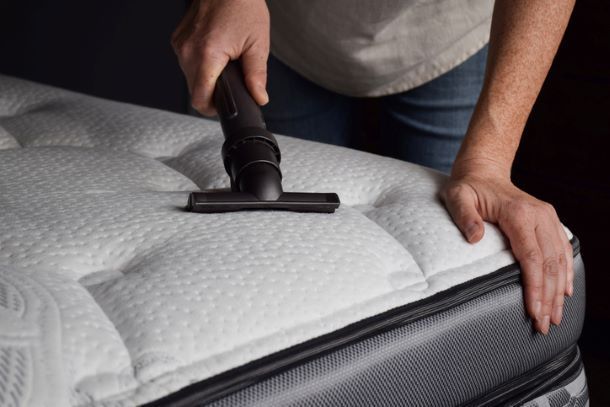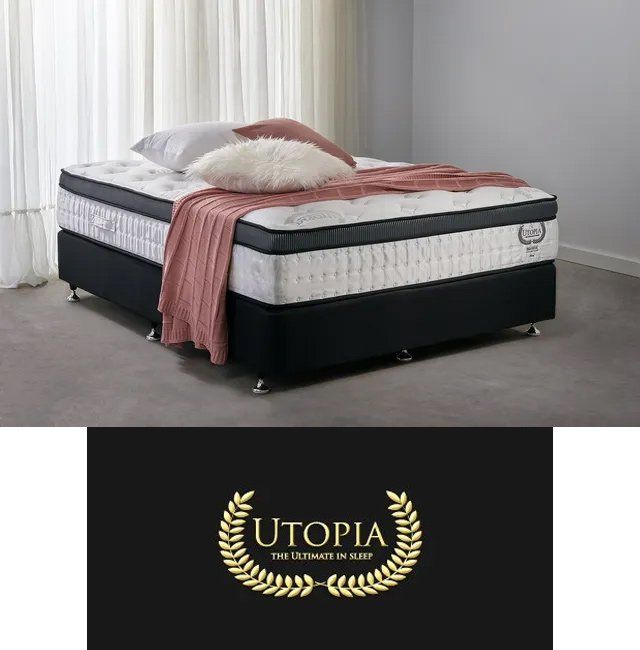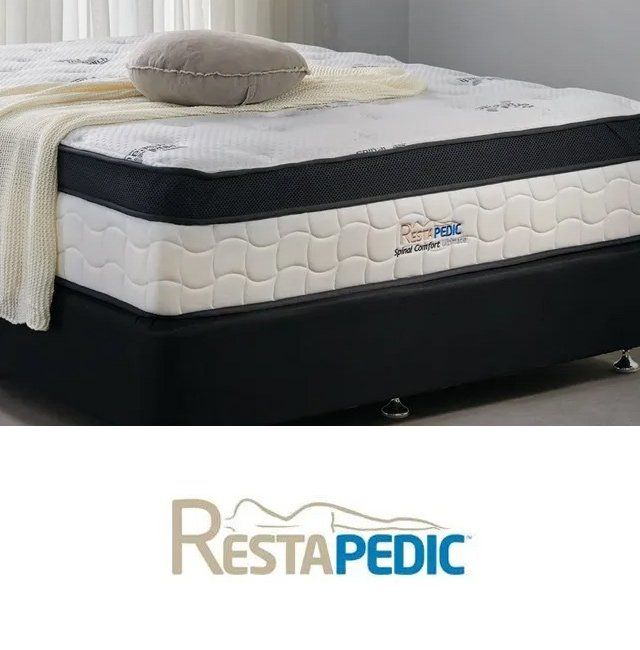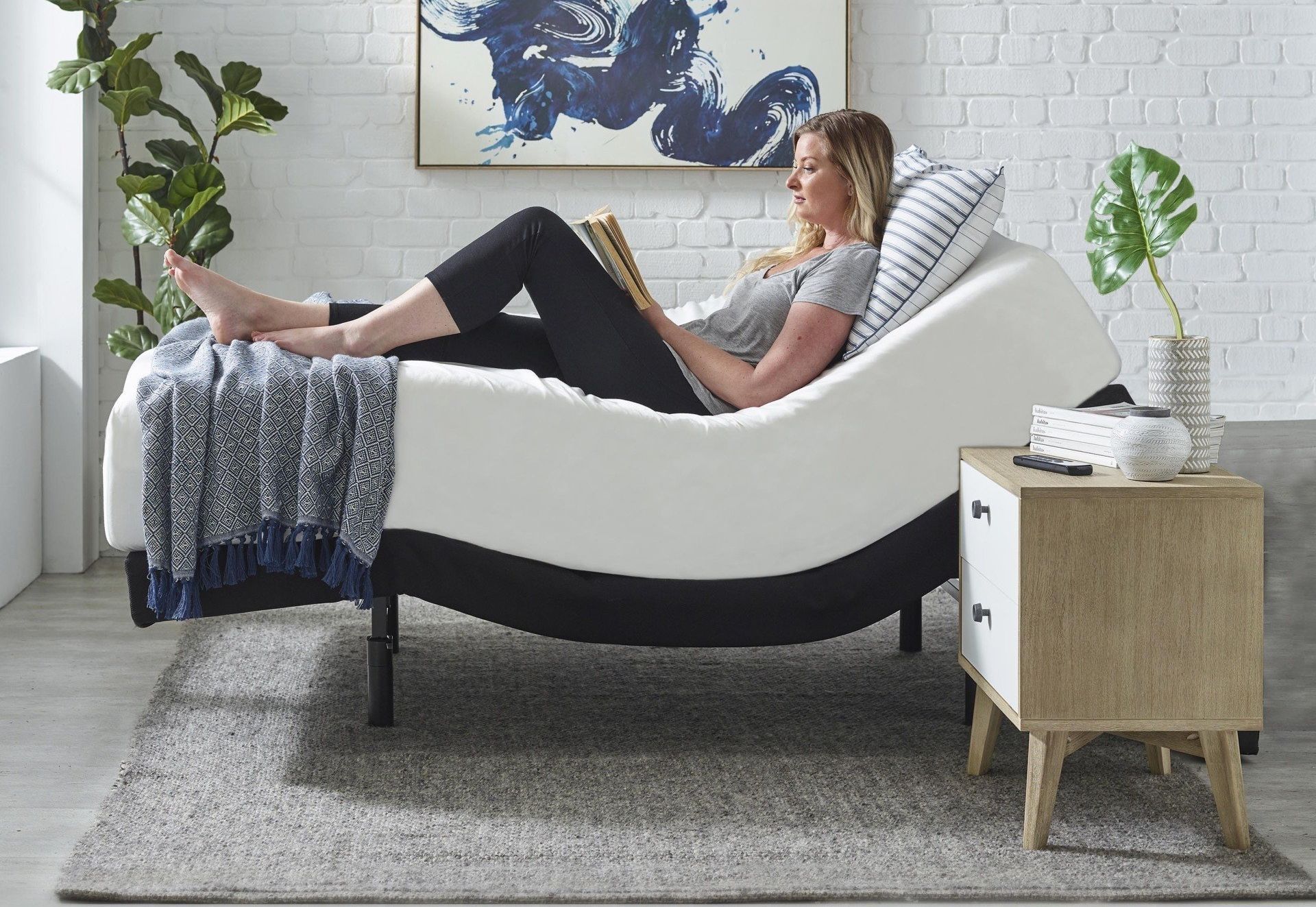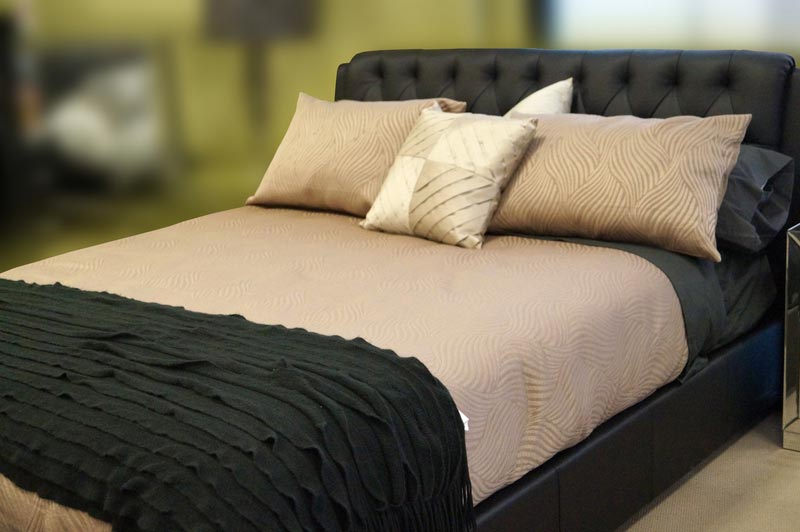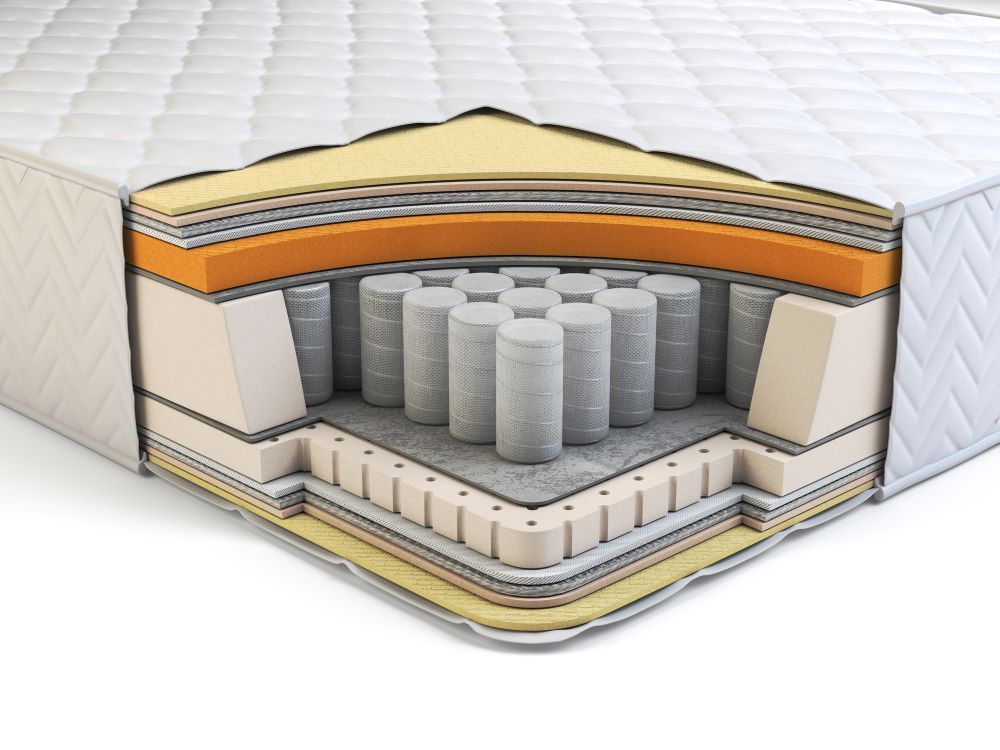How to Clean a Mattress and Remove Stains: Ultimate Cleaning Hacks
Over time, mattresses can accumulate dust, allergens, sweat, and stains. These can affect sleep quality and lead to health issues such as allergies and skin irritations. Moreover, a well-maintained mattress can last longer, saving you money and hassle in the long run.
Each type of mattress, whether memory foam or innerspring, requires specific care to avoid damage while ensuring it remains clean and comfortable. Additionally, it's essential to address stains from spills, sweat, and other bodily fluids promptly and effectively to prevent lasting damage.
Continue reading for practical, easy-to-follow cleaning hacks to help you clean and keep your mattresses fresh. Whether you're dealing with a fresh spill, looking to refresh your mattress, or needing a deep clean, we've got you covered.
When cleaning any mattress, regardless of its type—be it memory foam, innerspring, latex, or hybrid—the key principle is to minimise moisture. Excessive water can damage the material, promote mould growth, or rust the springs in innerspring mattresses. The aim is to use gentle spot-cleaning techniques, employ mild detergents when necessary, and ensure thorough drying after wet cleaning. Regular vacuuming is also universal, helping to remove dust and allergens across all mattress types. By understanding the basic nature of your mattress and adopting a "less is more" approach to moisture, you can effectively clean and maintain your mattress.
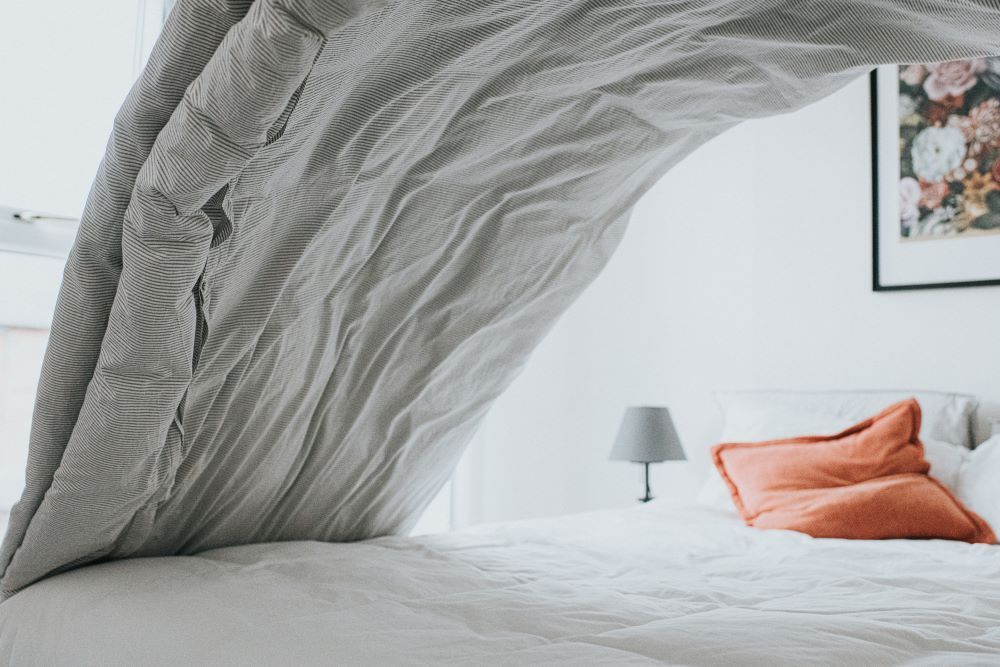
Pre-Cleaning Steps
Taking proactive measures can significantly extend the life of your mattress and reduce the frequency and difficulty of deep cleaning sessions. Here are some essential preventative care tips and guidance on setting a cleaning frequency that ensures your mattress remains in top condition.
Preventative Care
- Use a Mattress Protector: A high-quality mattress protector is the first line of defence against spills, stains, and accumulation of dust and allergens. Opt for a waterproof yet breathable protector to shield your mattress from liquids without compromising airflow and comfort.
- Reduce Moisture: Ensure your bedroom is well-ventilated to prevent moisture buildup, which can lead to mould and mildew. Using a dehumidifier in humid climates can also help maintain an ideal moisture level in the room.
- Regular Airing: When changing your bedding, air your mattress for a few hours before putting on fresh sheets. This practice helps evaporate any residual moisture and keeps the mattress fresh.
- Rotate Your Mattress:
Regularly rotating your mattress (every 3-6 months) can prevent uneven wear and extend its lifespan. Note that some mattresses are designed not to be flipped, but rotating end-to-end is still beneficial.
Cleaning Frequency
- Vacuuming: Vacuum your mattress with an upholstery attachment every time you change your sheets, or at least once a month, to remove dust, dead skin cells, and other allergens.
- Spot Cleaning: Address spills and stains immediately to prevent them from setting in. Even if accidents are rare, inspect your mattress for potential stains during your regular vacuuming schedule.
- Deep Cleaning: Aim to give your mattress a thorough deep clean every six months to remove odours, dust mites, and embedded dirt. This can coincide with seasonal changes, serving as a bi-annual reminder.
By implementing these preventative care measures and adhering to a regular cleaning schedule, you can significantly reduce the need for intensive cleaning, maintain a healthier sleeping environment, and ensure the longevity of your mattress.
Basic Mattress Cleaning Techniques
Keeping your mattress clean and fresh doesn't require specialised equipment or products. Regular vacuuming and prompt spot cleaning can go a long way in maintaining its hygiene and extending its life. Here's how to effectively use these basic cleaning techniques.
Vacuuming Your Mattress
Why Vacuum?
Vacuuming is essential for removing dust, dead skin cells, pet hair, and dust mites that accumulate on your mattress over time. These particles can irritate allergies and degrade the quality of your sleep environment.
How to Vacuum:
Start by removing all the bedding, including sheets,
mattress protectors, and toppers. Next, choose the right attachment for your vacuum cleaner. Use the upholstery attachment to avoid any damage to the mattress fabric. Be sure to pay attention to detail and vacuum the top surface, sides, and beneath the bed frame. Don't forget the seams and crevices, as dust and bugs can accumulate there. Lastly, make vacuuming a part of your regular cleaning routine. Ideally, vacuum your bed every time you change your sheets or at least once a month.
Spot Cleaning Spills and Stains
Immediate Action is Key
The sooner you address spills and stains, the less likely they will set and become permanent. Always dab or blot; never rub, as rubbing can spread the stain deeper into the mattress.
Techniques for Spot Cleaning:
- Blot the Area: Use a clean, dry cloth to blot any liquid immediately. Absorb as much as possible before applying any cleaning solution.
- Choose a Cleaner: A mild detergent solution (1 part mild detergent to 2 parts water) or an enzyme-based cleaner (for organic stains like blood or urine) works well for most stains. Test any cleaner on a small, inconspicuous area first.
- Apply the Cleaner: Dampen a cloth with your chosen cleaner and dab the stain. Start from the outside and work your way in to prevent spreading.
- Rinse and Dry: After the stain has lifted, dab the area with a damp cloth to rinse any soap residue. Then, press with a dry cloth to absorb excess moisture. Allow the mattress to air dry completely, ideally in a well-ventilated area or with the help of a fan.
For Odor Removal
Baking soda is excellent for removing odours. After spot cleaning, sprinkle a thin layer of baking soda over the area and let it sit for a few hours or overnight. Vacuum it up thoroughly.
Regular vacuuming and prompt spot cleaning can improve mattress cleanliness and longevity for a healthier sleep environment.
Deep Cleaning Your Mattress
Deep cleaning your mattress is essential for removing deep-seated dirt, stains, and odours that regular cleaning might not tackle. Here's a comprehensive guide to deep cleaning your mattress, along with some effective DIY cleaning solutions and deodorising methods.
Step-by-Step Guide for Deep Cleaning
- Strip and Wash Bedding: Remove all sheets, covers, and mattress protectors. Wash these items in hot water to kill any dust mites and bacteria.
- Vacuum Thoroughly: Using the upholstery attachment, vacuum the entire mattress surface, sides, and crevices to remove dust and debris.
- Spot Clean Stains: For any visible stains, use a targeted approach. Apply a small amount of your chosen cleaning solution directly to the stain and gently dab to remove it.
- Apply a Baking Soda Layer: Sprinkle a generous amount of baking soda over the entire surface of the mattress. Mix a few drops of essential oil (like lavender) with the baking soda before applying for extra freshness. Leave the baking soda on the mattress for 24 hours for a deeper clean. Check it every few hours to avoid caking.
- Vacuum Again: Remove the baking soda once it has absorbed all moisture, stains, and odours.
- Air Out: Let your mattress air out in the sun if possible. Sunlight has natural sanitising properties and can help eliminate lingering bacteria or odours.
- Flip and Repeat: If your mattress is double-sided and can be flipped, repeat the process on the other side. Even if it's not, vacuuming the underside is still a good idea.
DIY Cleaning Solutions
- For General Cleaning: Mix half water and half white vinegar in a spray bottle. Lightly mist the surface of the mattress (do not soak), and then wipe gently with a clean cloth.
- For Stain Removal: Create a paste with baking soda and a small amount of water. Apply directly to stains, let sit for a few hours, then dab away with a damp cloth.
- For Protein-Based Stains (e.g., blood, urine): Use an enzyme cleaner or make your own by mixing a few tablespoons of hydrogen peroxide, a tablespoon of liquid dish soap, and a tablespoon of table salt into a paste. Apply to the stain, let dry, then scrape off.
Deodorising Methods
- Baking Soda: As mentioned before, baking soda is excellent for neutralising odours. You can leave it on for as long as 24 hours for a thorough deodorisation.
- Essential Oils: Mixing a few drops of your favourite essential oil with baking soda before its application can leave your mattress smelling fresh and pleasant.
- Maintain Freshness: Regularly airing out your mattress and keeping it dry will help prevent odours from developing.
Cleaning your mattress is important for a good night's sleep and staying healthy. Follow the above steps to make sure your mattress is clean and lasts longer.
Stain Removal Hacks
Stains on your mattress can be unsightly and unsanitary, but most can be significantly reduced or completely removed with the right approach. Here's how to tackle common types of stains—like blood, urine, and sweat—using commercial and natural stain removers.
Blood Stains
- Cold Water Method: Immediately dab the stain with a cloth soaked in cold water. Avoid hot water, as it can set the stain.
- Hydrogen Peroxide: Apply a small amount of 3% hydrogen peroxide directly to the stain. The solution will foam upon contact; dab the foam away with a clean cloth. Repeat as necessary.
- Salt, Cornstarch, and Hydrogen Peroxide Paste: For dried stains, mix salt, cornstarch, and hydrogen peroxide to create a paste. Apply to the stain, let dry, then scrape off and vacuum.
Urine Stains
- Vinegar Solution: Mix one part white vinegar with two parts cold water. Spray or dab onto the stain, let sit for 10-15 minutes, then blot with a clean, dry cloth. Sprinkle baking soda over the area to neutralise the odour and vacuum after a few hours.
- Enzyme Cleaner: These cleaners are particularly effective for biological stains like urine. Follow the product instructions for application.
Sweat Stains
- Dish Soap and Water: Mix a few drops of liquid dish soap with water. Apply to the stain, then gently rub with a soft brush or cloth. Rinse with a damp cloth and blot dry.
- Lemon Juice and Salt: For lighter sweat stains, lemon juice mixed with salt can act as a mild bleach. Apply the mixture to the stain, let it sit for an hour, and then wipe it off.
General Stain Removal Tips
- Blot, Don't Rub: Always blot stains gently; rubbing can spread the stain and embed it deeper into the mattress fibres.
- Test Solutions First: Before applying any solution, test it on a small, inconspicuous mattress area to ensure it won't cause damage or discolouration.
- Allow for Air Drying: After treating any stain, allow the mattress to air dry completely before remaking the bed. A fan or open window can speed up the drying process.
Cleaning Solutions Recommendations
- Natural Solutions: Vinegar, baking soda, and lemon juice are effective for many stains and safe for most mattresses.
- Commercial Cleaners: A commercial enzyme cleaner or upholstery cleaner can be more effective for tough stains. Look for products specifically designed for the type of stain you're treating, and follow the instructions closely.
By addressing stains promptly and using the appropriate cleaning methods, you can keep your mattress looking and smelling fresh, ensuring a healthier sleeping environment.
It's important to remember that the health of your mattress has a direct impact on your own health and well-being. Regular cleaning not only contributes to a more hygienic sleep environment but also enhances the overall quality of your sleep. We recommend integrating these cleaning hacks into your routine, maintaining a schedule that suits your lifestyle and your mattress's specific needs. Remember, a clean mattress is the foundation of a restful, rejuvenating night's sleep, so take the time to care for it properly. Here's to countless nights of restful sleep on a clean, fresh mattress that supports your health and comfort year after year!

